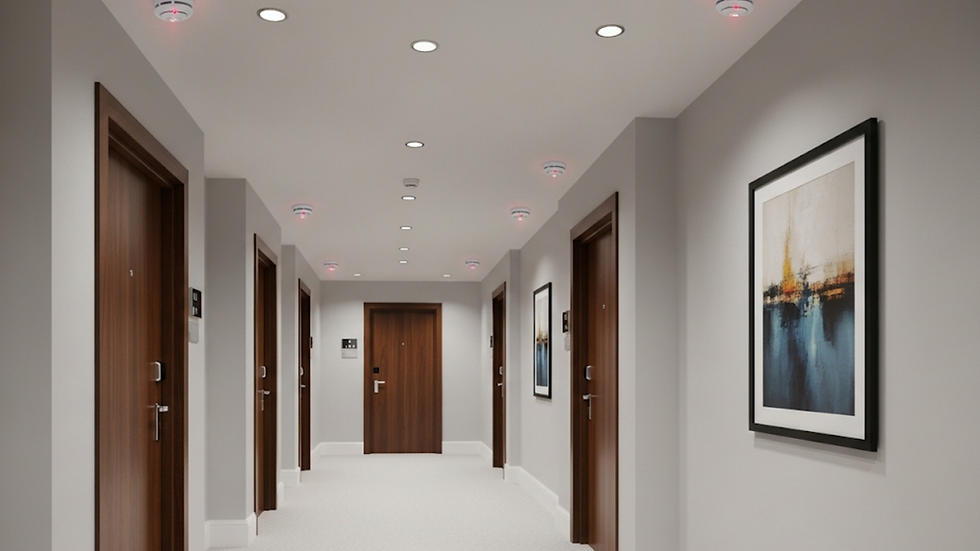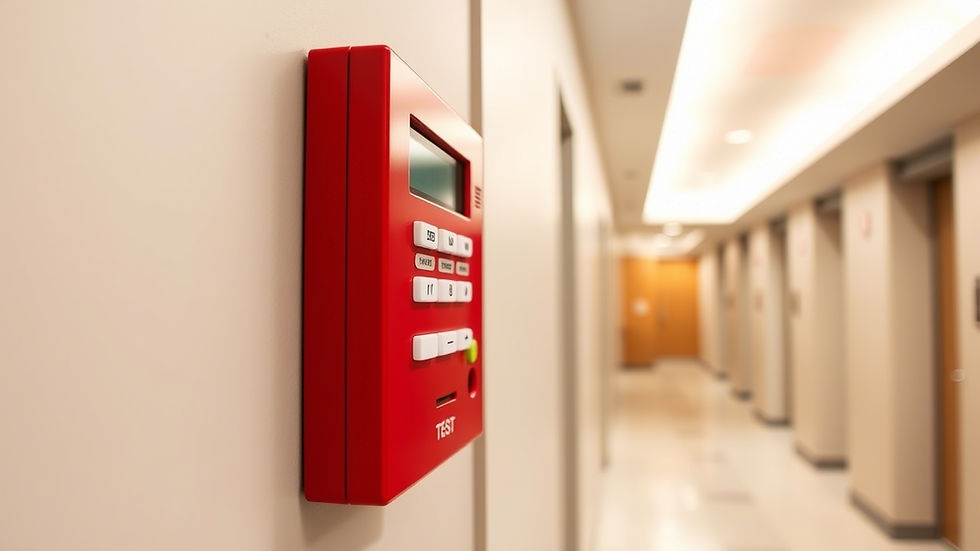What Are Fire Detection Systems & How Do They Work?
- Quickship Fire
- Jul 22
- 4 min read
Introduction
Safety in today's modern buildings is more than just locked doors and security cameras; it begins with an effective early fire detection system. Fires can start unexpectedly, and your location could be at risk of fire spreading much quicker than you realize. The Fire Detection System protects your home, office, or commercial building before we have a massive catastrophe.
So, what exactly are Fire Detection Systems, and how do they actually work? In this article, we will break it down as simply as we can and make it easier to understand.

Understanding Fire Detection Systems
What Is a Fire Detection System?
A Fire Detection System is a network of interconnected devices designed to detect the presence of fire, smoke, or heat within a building. When triggered, the system sends alerts to building occupants and emergency responders sometimes even initiating automatic safety actions like unlocking exits or shutting down HVAC systems.
The core idea? Early warning. And in fire safety, early warning can mean the difference between a close call and a disaster.
Key Components of Fire Detection Systems
1. Fire Alarm Control Panel (FACP)
The brain of the operation. It receives signals from detection devices and then activates alarms, strobes, or other alerts.
2. Smoke Detectors
These detect the particles produced by combustion. There are different types, like Photoelectric Smoke Detectors, which are best for slow-burning fires, and ionization detectors for flaming ones.
3. Thermal Heat Detectors
Instead of sensing smoke, these devices trigger an alarm when they detect a rise in temperature ideal for dusty or steamy environments where smoke detectors might fail.
4. Manual Pull Stations
A manual option for building occupants to activate the alarm system in case they spot a fire before detectors pick it up.
5. Notification Appliances
These include horns, strobes, bells, and voice announcements to alert everyone inside the building to evacuate immediately.
How Do Fire Detection Systems Work?
Here’s a simplified explanation:
Detection Phase
Devices like Photoelectric Smoke Detectors or Thermal Heat Detectors monitor their surroundings continuously.
Signal Transmission
Once a device detects smoke or heat, it sends a signal to the Fire Alarm Control Panel.
System Response
The panel processes the signal and decides the next steps: sounding an alarm, sending alerts, or activating sprinklers.
Emergency Notification
Some systems can automatically notify emergency services or be monitored remotely through building management software.
Types of Fire Detection Systems
Conventional Fire Detection Systems
In these systems, detectors are grouped by zones. If there's an alarm, it tells you which zone is affected but not the specific device.
Best for: Small commercial buildings, schools, retail shops.
Addressable Fire Detection Systems
Every device has a unique address. If something triggers an alarm, the system tells you exactly where it happened like "Room 302, East Wing."
Best for: Large offices, hotels, industrial sites.
Benefits of Fire Detection Systems
Faster Emergency Response
Get alerted the moment danger arises this saves lives.
Minimized Property Damage
Stopping a fire early prevents destruction and costly repairs.
Code Compliance
Modern Fire Detection Systems are required by law in many regions. Installing them helps you stay compliant.
Peace of Mind
Knowing your building is protected 24/7 just feels better, doesn’t it?
Installation and Maintenance Tips
1. Plan the Layout
Map out where detectors will be placed. Focus on high-risk areas like kitchens, electrical rooms, or HVAC ducts.
2. Use the Right Detector
Photoelectric Smoke Detectors are great for detecting slow-burning fires. Thermal Heat Detectors work best in garages, kitchens, or warehouses.
3. Test Regularly
Perform monthly tests and schedule professional inspections at least once a year.
4. Train Your Staff
Everyone should know how the system works and what to do when it goes off.
FAQs About Fire Detection Systems
Q1: Are Fire Detection Systems required in all buildings?
Not every building, but most commercial and industrial properties must have them installed as per local fire codes. Even homes are increasingly required to have basic systems.
Q2: Can Fire Detection Systems prevent false alarms?
Modern systems include smart sensors and software that reduce false alarms significantly, especially when Photoelectric Smoke Detectors are used correctly.
Q3: What is the difference between a smoke detector and a fire alarm system?
A smoke detector is a single device. A Fire Detection System is a full setup that includes detectors, alarms, and control panels all working together.
Q4: How long does a Fire Detection System last?
On average, detectors last 10 years. Panels and wiring may last longer but should be inspected regularly for updates or replacements.
Conclusion
Fire Detection Systems are no longer just a nice-to-have; they are necessary to protect lives and property! Small businesses to multi-building facilities are all making the right decision to invest in a detection system. Putting in the right detection system makes the investment worthwhile every day!
Make sure your building has Photoelectric smoke detectors and Thermal Heat detectors where applicable. These two types work together as a strong defense against unexpected fires by giving the user more assurance and safety.
In 2025 and beyond, we need to stay safe, we need to be ahead of the game. Do not wait until a fire happens to realize how valuable your detection system is make the move today!



Opmerkingen